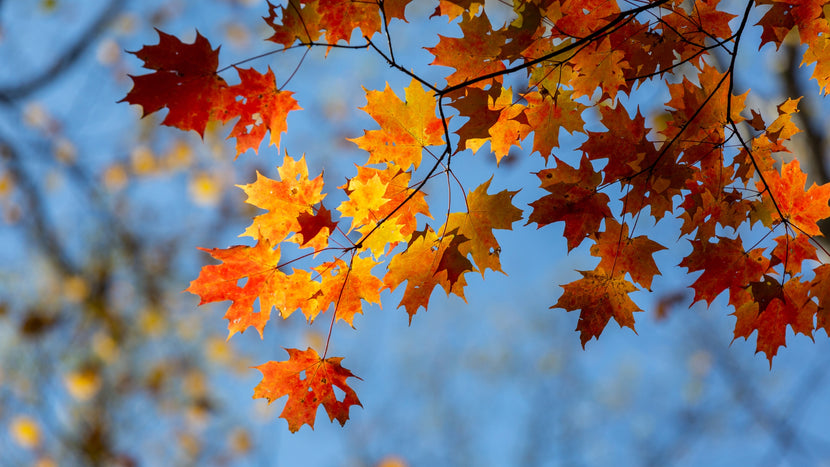
Why Leaves Change Color in the Fall: A Gardener's Guide
As autumn approaches, one of nature's most captivating displays begins to unfold—the changing colors of leaves. For gardeners, this seasonal transformation is not just beautiful but also a reminder of the complex biological processes that trees and shrubs undergo.
In this blog, we'll explore the science behind why leaves change color in the fall, what this change means for your garden, and how to appreciate and incorporate fall color into your landscape designs.
The Science Behind Fall Color
The vibrant reds, oranges, yellows, and purples that we associate with fall are present in

leaves all year round, but they are masked by the dominant green pigment known as chlorophyll. Chlorophyll is essential for photosynthesis, the process by which plants convert sunlight into energy.
However, as daylight hours shorten and temperatures cool, plants begin to prepare for winter dormancy. This is when chlorophyll production slows down and eventually stops, allowing the other pigments—carotenoids (yellow and orange) and anthocyanins (reds and purples)—to become visible.
Carotenoids, responsible for the golden hues seen in maples, birches, and hickories, are present in the leaf all summer. Anthocyanins, which create those striking reds and purples in trees like dogwoods and red maples, are produced in response to cooler temperatures and bright sunlight. The combination of these pigments creates the vibrant palette of fall colors that many gardeners love to see in their landscapes.
What Fall Color Means for Your Garden
In the garden, the changing colors of leaves signal a shift in the plant's life cycle. As

photosynthesis slows and chlorophyll breaks down, plants are conserving energy and nutrients to survive the winter months.
For deciduous trees and shrubs, this means dropping their leaves to reduce water loss and preserve energy, while evergreens continue to photosynthesize at a slower rate throughout the winter.
For gardeners, understanding why leaves change color can help you better care for your landscape during the fall season. If you notice certain trees are not turning color as vibrantly as expected, it may indicate stress due to drought, nutrient deficiencies, or improper soil conditions.
Proper fall care, such as deep watering before the ground freezes and adding organic mulch can help your trees and shrubs prepare for winter while ensuring vibrant fall displays in the future.

Appreciating Fall Color in the Landscape
Fall is when the garden reaches its final crescendo of color, and savvy gardeners can use this to their advantage by choosing plants that provide stunning autumn interest. Trees like Red Maples, oaks, and Japanese maples offer a variety of bold hues, while shrubs such as burning bush (Euonymus alatus), fothergilla, and Viburnums add fiery reds and oranges to the landscape. Incorporating ornamental grasses like Panicum and Miscanthus can also enhance the beauty of fall with their golden tones and feathery plumes.
When planning your garden for fall color, think about layering plants for maximum impact. Place large trees in the background, colorful shrubs in the mid-layer, and perennials or grasses in the foreground to create a cohesive design that glows with autumn brilliance.
By understanding the science behind leaf color change and planning accordingly, you can extend the beauty of your garden well into the cooler months and enjoy a spectacular display year after year.
Conclusion
Fall is not just a time for winding down the garden, it's an opportunity to celebrate nature’s grand finale of color. With thoughtful plant selections and proper care, you can make the most of this seasonal transformation and create a garden that shines with fall's vibrant beauty.
